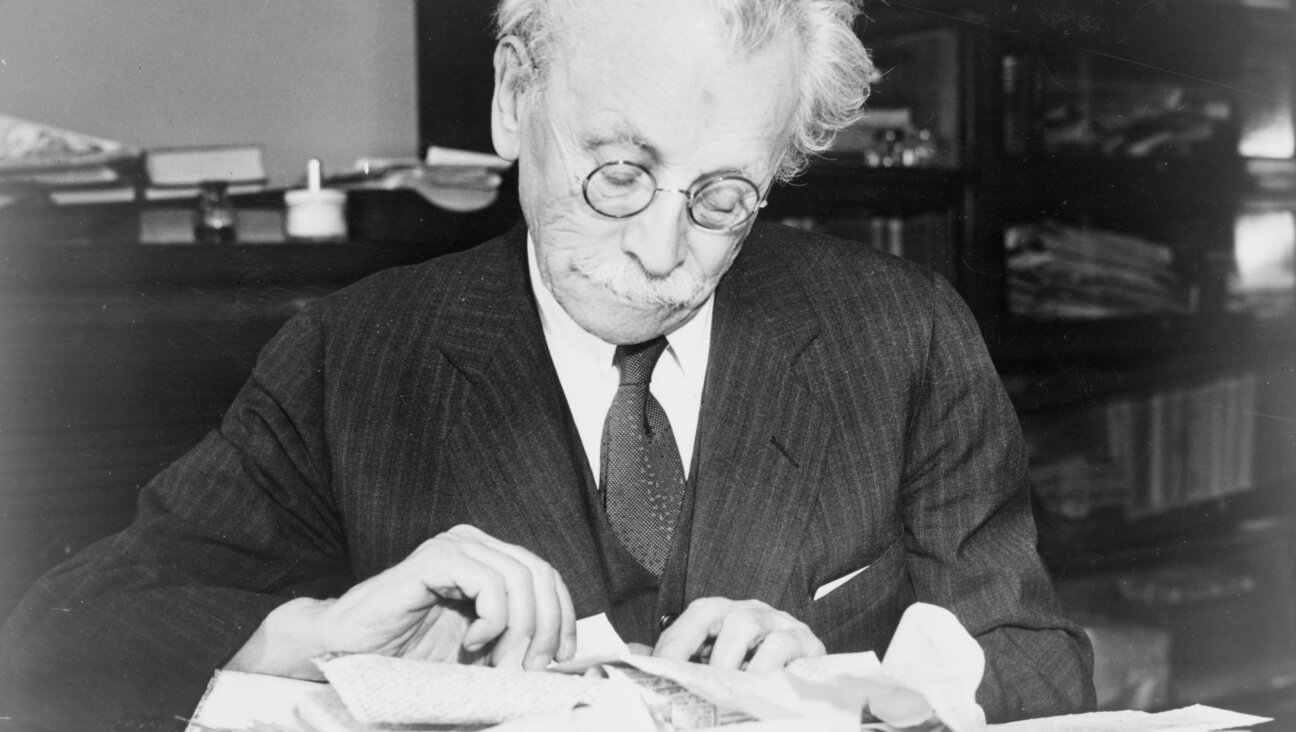Drug Trial Brings Hope to Late Onset Tay-Sachs Patients
Doctors are experimenting with an oral medication known as Zavesca as a possible treatment for late onset Tay-Sachs (LOTS) disease, it was reported at a conference in Philadelphia last month.
New York University School of Medicine and Cleveland University Hospital both launched trials using the drug, whose chemical name is OGT918 or miglustat, on 15 subjects at each site last November, according to a presentation at the Ninth Annual Late Onset Tay-Sachs Conference, which was held here from July 10 to July 12 at the Franklin Wyndham Plaza Hotel.
The study, while still in its early stages, brought hope to the LOTS sufferers assembled here.
“For nine years we haven’t had anything; now there are several different areas that seem promising,” said Sue Fishbein, recording secretary for the Late Onset Tay-Sachs Foundation, who was diagnosed with LOTS in 1987 and at press time was preparing to travel to Cleveland to participate in the OGT918 study.
LOTS, like its infantile variant, is a Jewish genetic disease. The symptoms are hard to quantify but are usually described as weakness, trembling and trouble with walking, speech and gait.
OGT918 is sold as Zavesca in Europe and Israel, where it has been approved to treat Gaucher disease, which, like Tay-Sachs, is a lipid storage disease. The study is supported by Oxford Glyco Sciences, a British biopharmaceutical company that produces the drug. Doctors involved in the study think that Zavesca can alleviate the symptoms of LOTS because it is a substrate inhibitor. It reduces the amount of GM2 ganglioside, the waste material that LOTS patients’ brains cannot dispose of properly, which results in neurological dysfunction. Zavesca cannot be used in its current pill form to treat infantile-onset Tay-Sachs because it is not palatable to such young patients.
Dr. Gregory Pastores, an assistant professor of neurology and pediatrics and co-director of the Neurogenetics Laboratory at New York University School of Medicine, said he is optimistic about the OGT918 trial because preliminary evidence shows that “the drug has entered the spinal fluid of some patients, which means it also entered their brains.”
“What we are doing now is the next step — trying to figure out when we can say the drug is safe and not toxic to subjects,” Pastores said.
While the researchers at the conference were not able to report any major milestones or proffer any statistics about their study, they and patients’ groups lauded the trial as a milestone in the fight against LOTS, marking the first attempt to treat the disease.
“Although it’s too soon to tell, anecdotally, some patients are telling us their speech and balance are getting better,” said Dr. Barbara Shapiro, principle investigator of the OGT918 trial in Cleveland.
According to Pastores, several aspects of LOTS make the drug trial path-breaking — and challenging. Because LOTS is so rare, a “natural history” — a record of how the disease typically progresses untreated from its onset — has never been developed. The lack of a natural history of the disease makes it a challenge to measure the magnitude of manifestations of the disease such as muscle changes, gait and tremor — and to measure how they are affected by Zavesca. Given the lack of such a record, the Food and Drug Administration required that there be a control group for the OCT918 trial. Therefore, one-third of the participants, randomly chosen from each site, are not given OGT918, and their disease progression is monitored.
The drug is administered to the subjects, who get it three times a day, and their responses to it are measured and recorded. Pastores declined to state how much of the drug has permeated the subjects’ systems, nor would he give a date for the study’s conclusion, information that he said was confidential.
One method of measuring the disease and its treatment was showcased during the conference. When subjects first enter the study at the Cleveland site, and at a midpoint and at the end, their eye movements, called saccades, are recorded using a special contact lens with a coil in it. The eye movement data is intended to act as a subtle marker of the disease because most LOTS patients have to make a series of saccades to reach a visual target, many more than a nonaffected person. If the drug is working, the number of saccades recorded will decrease, researchers theorize.
Shapiro is also involved in a separate survey study of medications for LOTS patients, many of whom suffer from depression and other mental illnesses.
“Many LOTS patients are prone to manic depression and psychosis, and we wanted to see if any of the medications they were taking were making them worse,” Shapiro said.
Some 35 people have returned the survey, which they were instructed to read over with a family member or caretaker. Although the researchers have yet to register their conclusions, preliminary findings indicate that anti-psychotic drugs such as Haldol and Risperdal made symptoms worse, Shapiro said. Lithium, used to treat manic depression, and mood stabilizers such as Ativan and Klonopin were deemed generally safe. Shapiro hopes results of the study will educate physicians about what medications they should prescribe patients with LOTS and similar diseases.
Doctors reported on several other promising areas of research at the conference.
Jean-Pyo Lee, a postdoctoral fellow, and Dr. Evan Snyder described the neural stem cell research occurring at Snyder’s eponymous lab at the Harvard Institutes of Medicine. They are investigating neural stem cells transplanted in mice with Sandhoff’s disease, which is similar to Tay-Sachs. They said that they chose the Sandhoff model because it yields data in a shorter time. Lee explained that transplanted neural stem cells might benefit the mice by reducing lipid buildup and replacing lost brain functioning. They are investigating whether or not transplanted neural stem cells will function properly or degenerate over time in the mice. They plan to extend their research to monkeys.
Despite the progress in neural stem cell research, researchers, patients and families interviewed at the conference did not expect to see any results in the field soon because of the limits on stem cell research imposed by the Bush administration.
The Zavesca trial is raising more hopes. Doctors at the conference said that even if the trial proved to be a failure in the eyes of the drug company, it would still be of value to science.
“If we can keep the disease from progressing, that would be a major breakthrough,” Pastores said. “The breakthrough is in controlling the disease, but the miracle is in reversing it and restoring people to a functional health of life.”






















